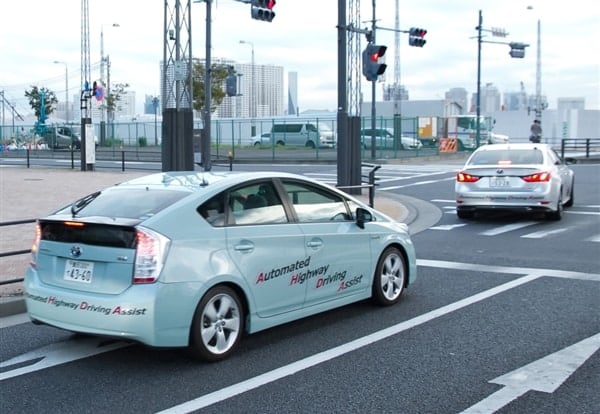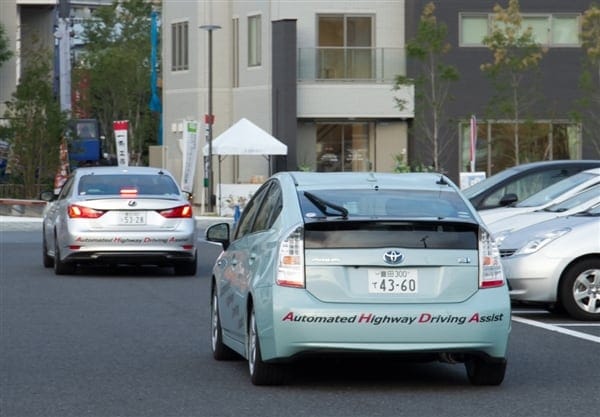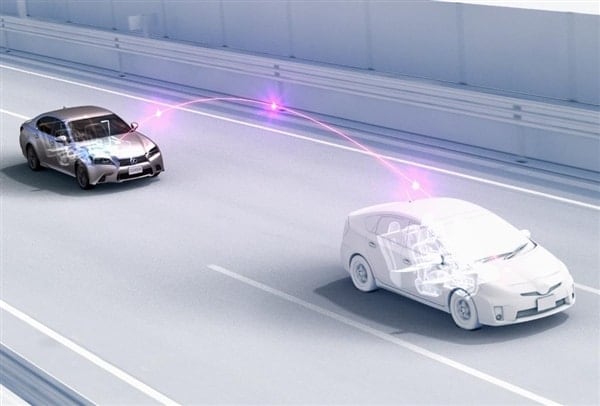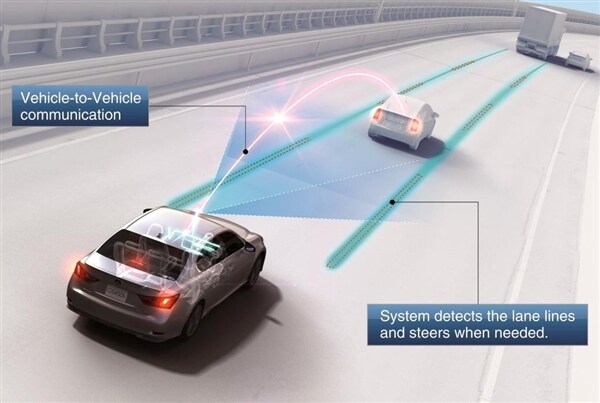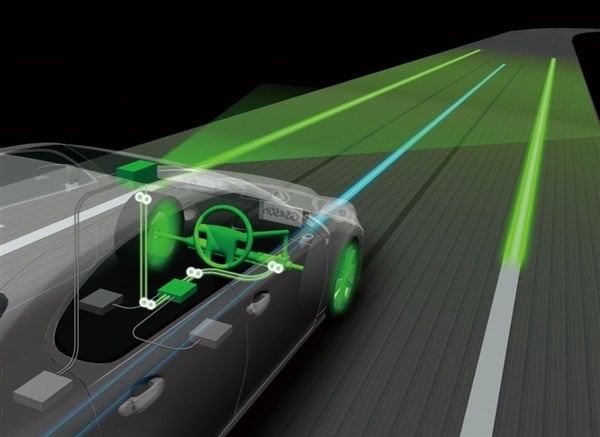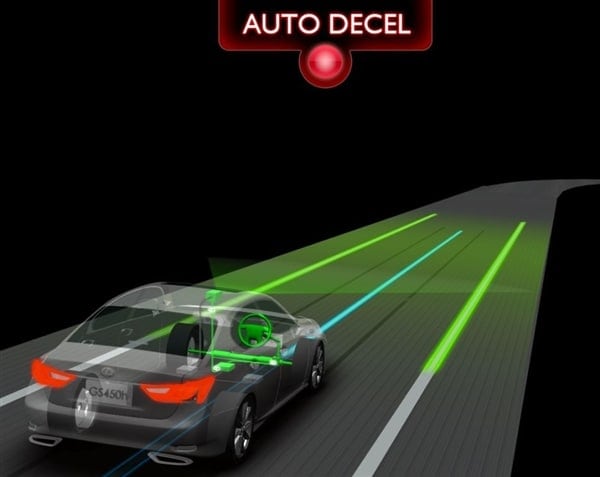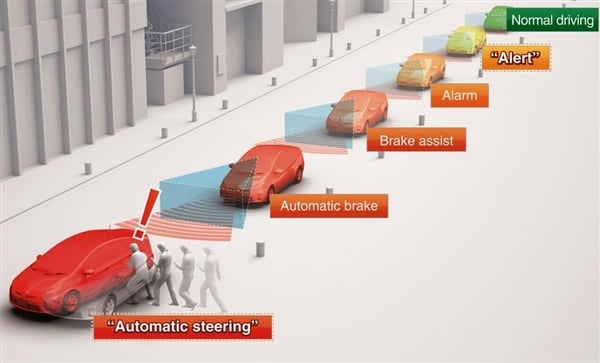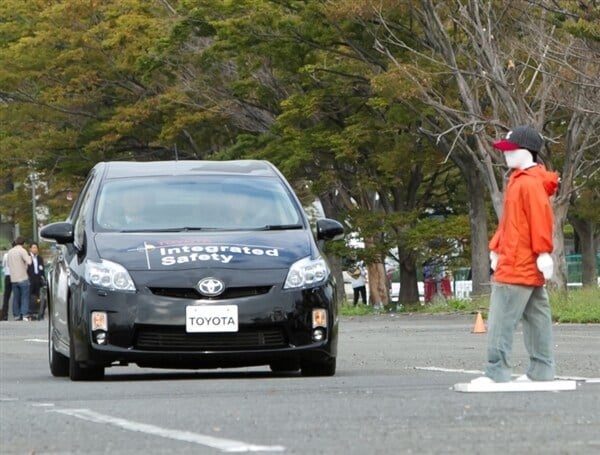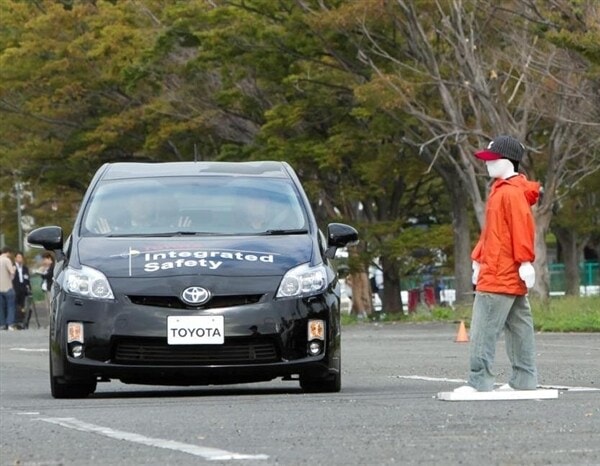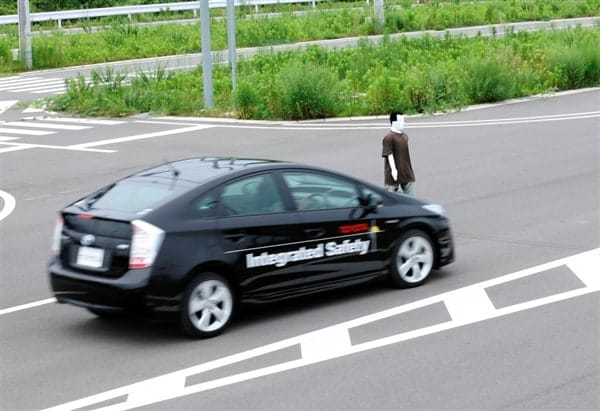To be fully detailed at this week’s Intelligent Transport Systems World Congress Tokyo 2013, Toyota has developed a number of next-gen safety technologies that it intends to start rolling out around 2015 under the Automated Highway Driving Assist (AHDA) umbrella. The firm also announced it has created an enhanced version of its existing Pre-collision System (PCS) that offers more advance notice of a potential impact and adds a new Pedestrian-avoidance Steer Assist feature. We had a chance to experience these new systems in action last week during a trip to Japan.
Also: 10 Best Sedans Under $25,000 for 2013
Designed for use in both conventional and future fully-autonomous applications, AHDA integrates two key elements: Cooperative-adaptive Cruise Control and Lane Trace Control. Unlike conventional adaptive cruise control setups based around millimeter-wave radar, Toyota’s alternative uses 760MHz radio waves that can more quickly transmit acceleration/deceleration data between vehicles linked into the system to help maintain optimum intervals and eliminate stop-and-go conditions that lead to traffic snarls. While a final operating standard needs to be created and approved before it will be able to work with other automaker’s offerings, Toyota will participate in a cooperative evaluation of Cooperative-adaptive Cruise Control with Mazda and Subaru later this month.
Already undergoing real-world testing in Japan, Toyota’s Lane Trace Control system is an all-new and even-more-capable, full-speed-range take on the Lane Keep Assist functionality found on certain Lexus models. It does use millimeter-wave radar as well as sophisticated software and high-performance cameras located adjacent to the rearview mirror to effectively read road markings and automatically adjust the vehicles steering, braking and drive torque as necessary to keep it centered in a traffic lane. The automaker plans to use components and technologies culled from the Advanced Safety Research Vehicle it revealed at last year’s CES event to expedite the commercial implementation of AHDA in Japan and other world markets.
Also: 10 Best SUVs Under $25,000 for 2013
Toyota also demonstrated the latest version of its Pre-collision System which is now even more effective at helping a driver avoid striking a pedestrian who may inadvertently wander into harm’s way. In addition to expanding the initial visual warning interval from two to four seconds when a risk is first detected, this upgraded PCS also provides increased automatic braking force and ultimately adds new steering-avoidance input to direct the car away from an individual if it determines that braking alone won’t be sufficient to avoid an impact. Finally, Toyota presented two additional driver-support features, an enhanced Panoramic View monitor with cross-traffic detection that offers full 180-degree front and rear views plus side imaging as well as a new and more user-friendly Intelligent Parking Assist system.
More Safety Technology…
Cadillac’s Super Cruise technology is ready to start real-world testing
Mercedes-Benz has introduced a new anti-wrong-way-driver warning system
2014 Volvos will offer a new cyclist-detection safety system
Popular at KBB.com
10 Best SUVs Under $25,000
Your 12 Midsize Sedan Choices
First Pics: All-new Cars for 2014

